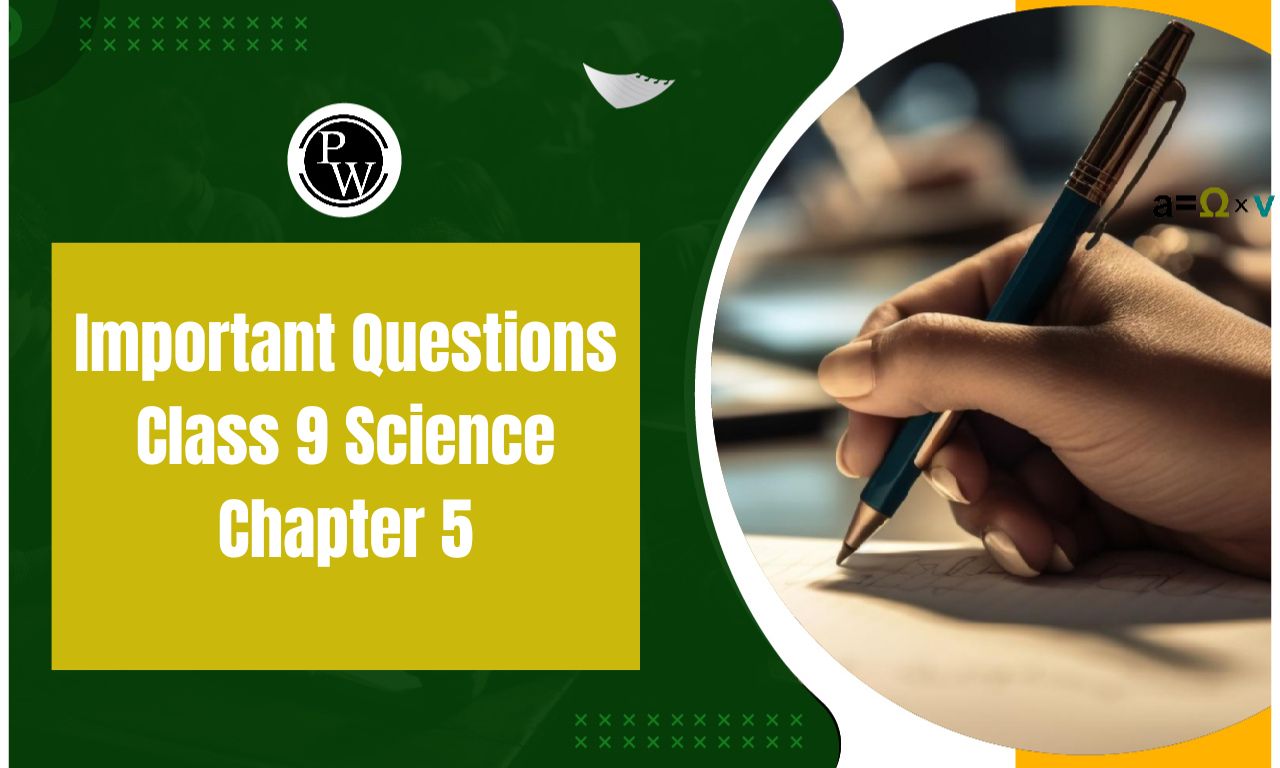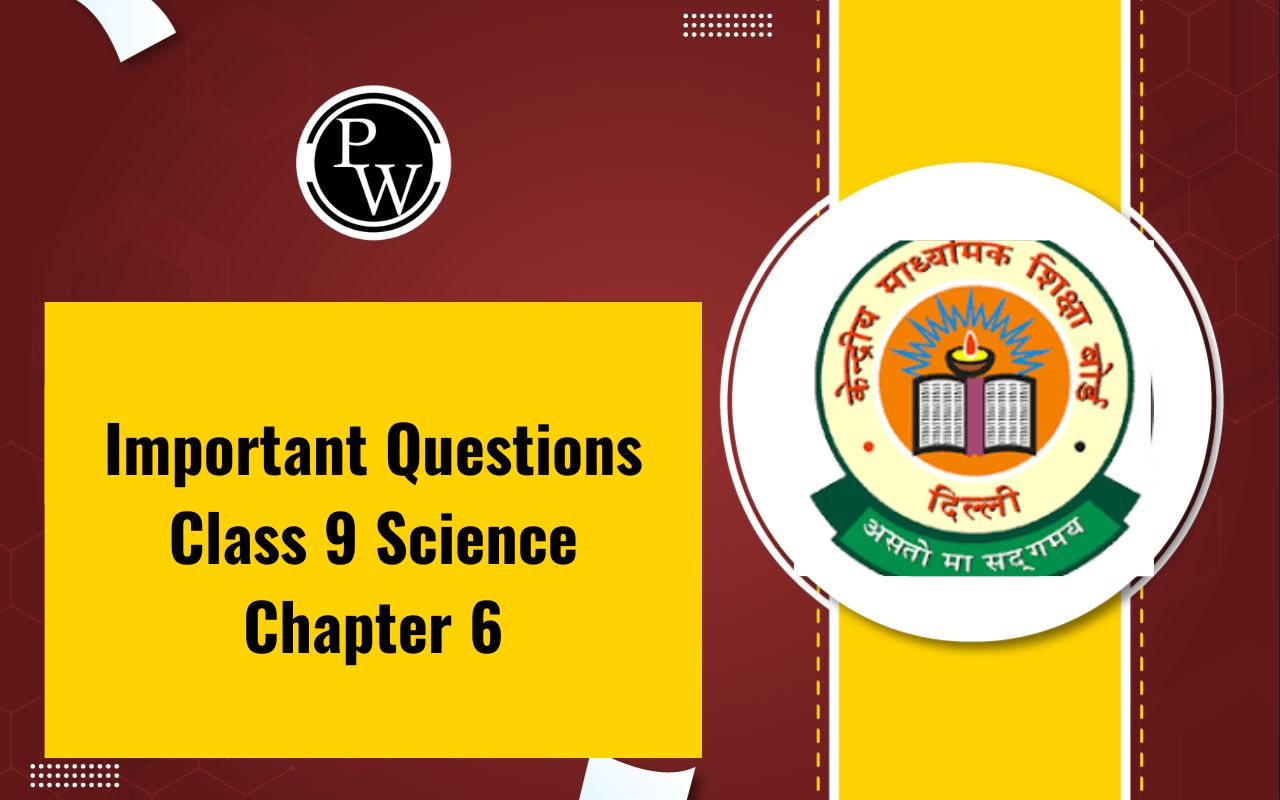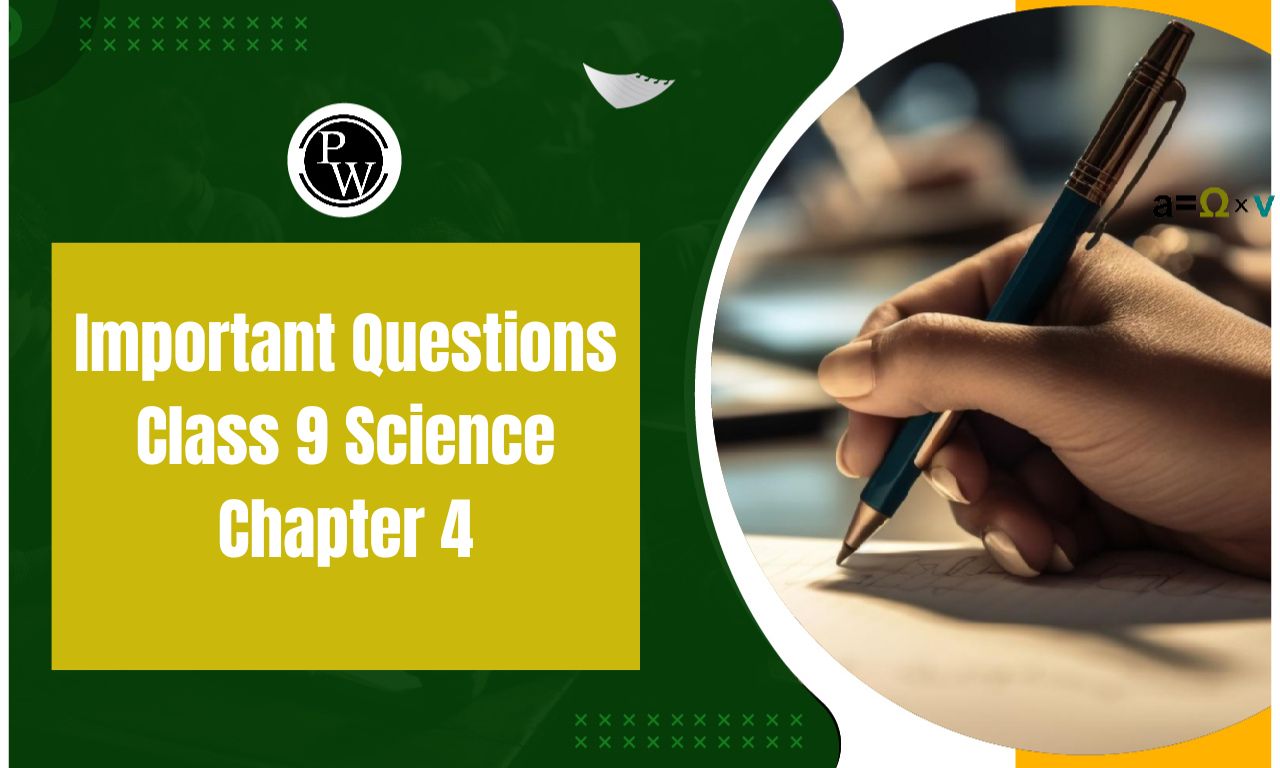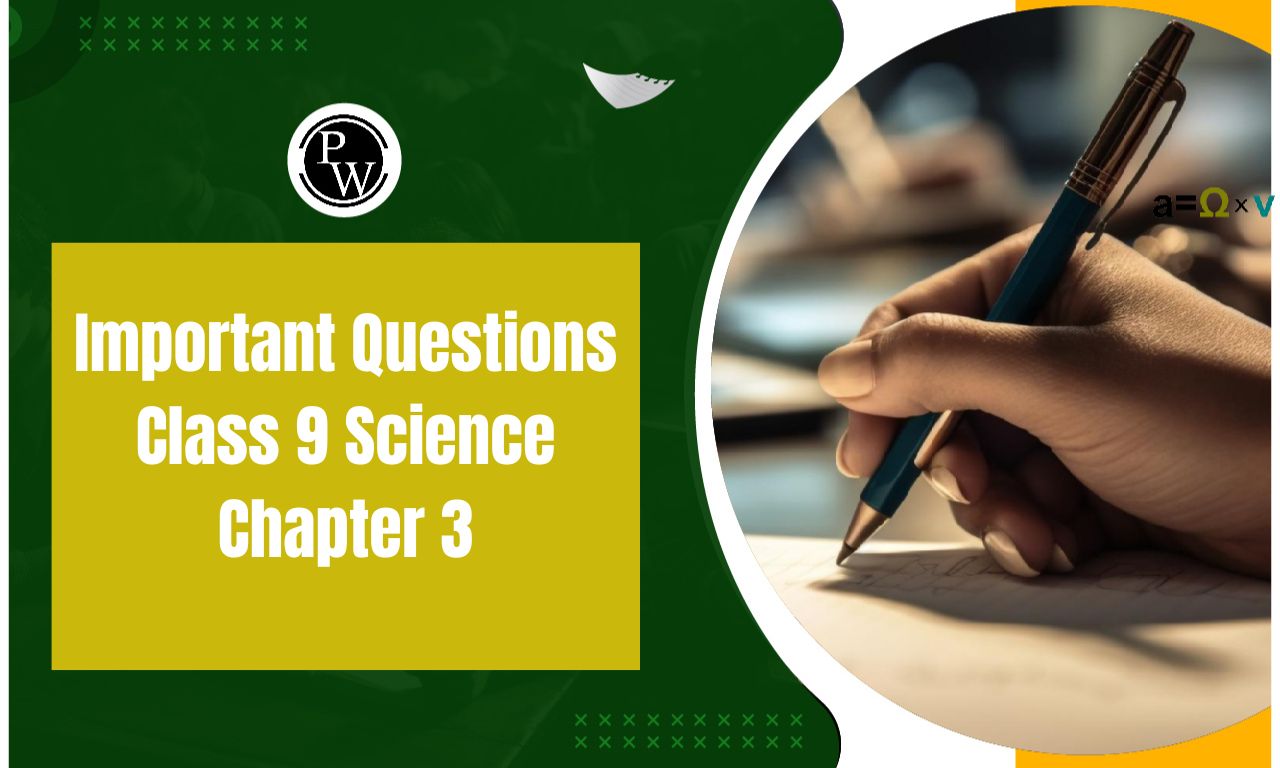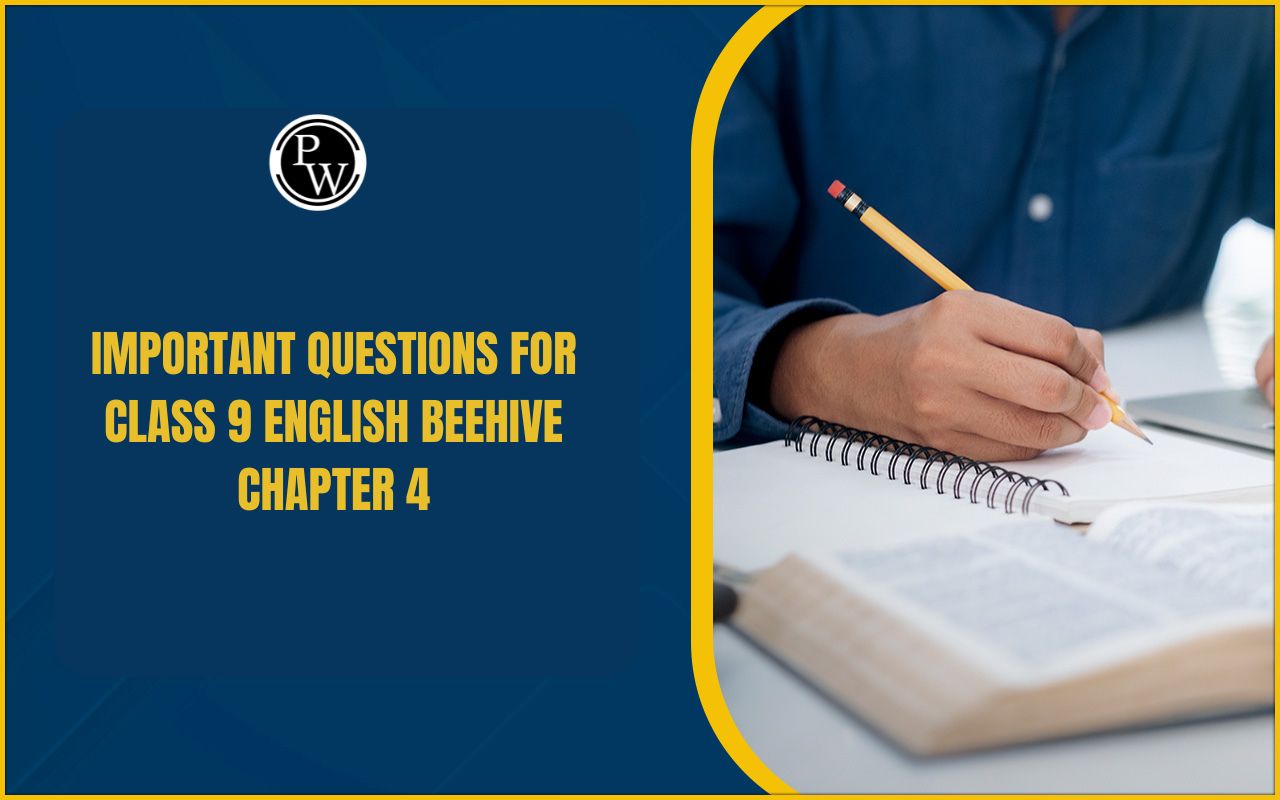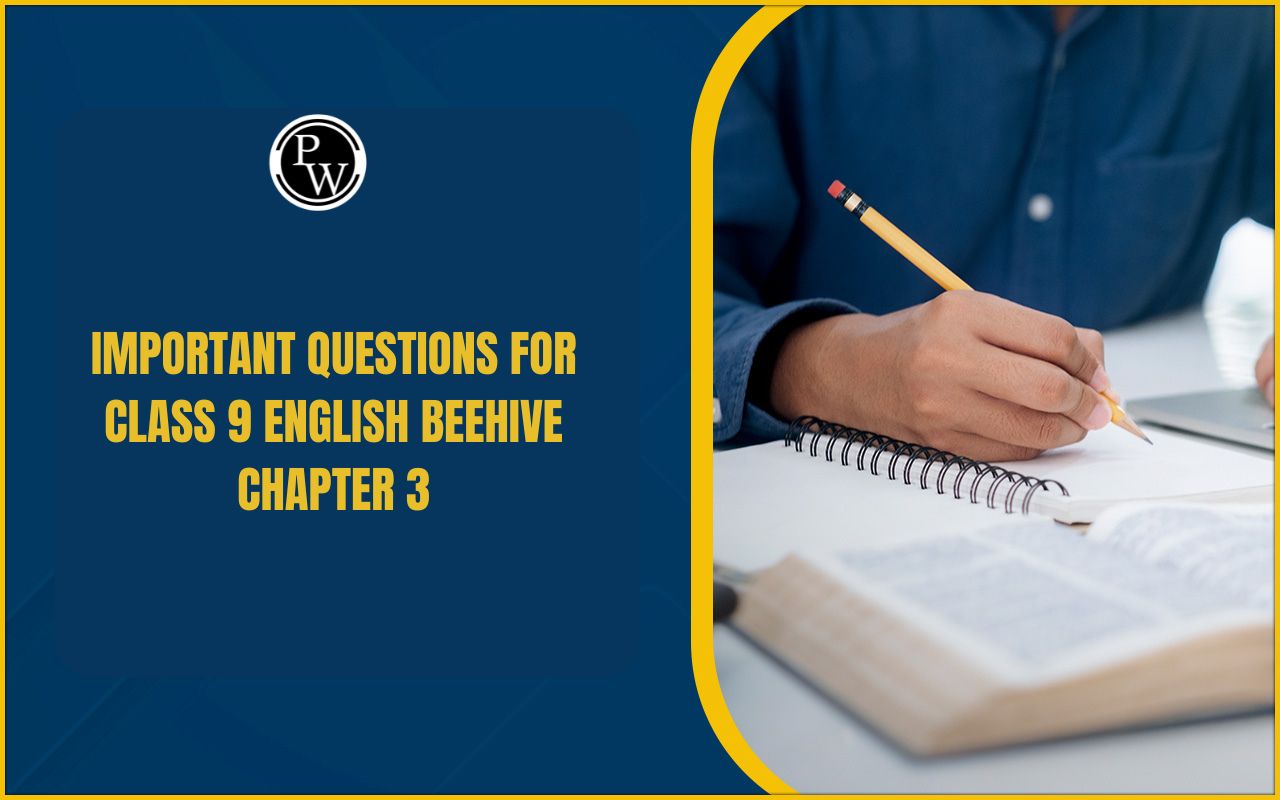
RD Sharma Solutions Class 9 Maths Chapter 16: RD Sharma Solutions for Class 9 Maths Chapter 16 on Circles are available to help students in mastering the concepts covered in this chapter.
Circles are closed curves where all points are equidistant from a fixed point called the center. Understanding concepts such as radius, diameter, circumference, and area of a circle is crucial in this chapter.CBSE Class 9 Science Syllabus 2024-25
RD Sharma Solutions provide comprehensive explanations and step-by-step solutions to problems, ensuring clarity and understanding for students. With these solutions, students can practice and strengthen their grasp of circle-related topics, thus enhancing their overall mathematical proficiency. Here we have provided RD Sharma Class 9 Solutions Maths Chapter 16 solutions for the students to help them ace their examinations. Students can refer to these solutions and practice these questions to score better in the exams.RD Sharma Solutions Class 9 Maths Chapter 16 Circles PDF
RD Sharma Solutions Class 9 Maths Chapter 16 Circles
The solutions for RD Sharma Class 9 Maths Chapter 16, which covers Circles, are provided below. These solutions provide detailed explanations and step-by-step guidance to help students understand the concepts involved in this chapter.CBSE Class 10 Result 2024 Expected To Be Out Soon
From learning about the properties of circles to solving problems related to radius, diameter, circumference, and area, these solutions are designed to assist students in mastering the topic effectively. Whether you're studying for exams or simply seeking to improve your understanding of circles in mathematics, these solutions are a valuable resource.RD Sharma Solutions Class 9 Maths Chapter 16 Circles Exercise 16.1 Page No: 16.5
Question 1: Fill in the blanks:
(i) All points lying inside/outside a circle are called ______ points/_______ points.
(ii) Circles having the same centre and different radii are called _____ circles.
(iii) A point whose distance from the center of a circle is greater than its radius lies in _________ of the circle.
(iv) A continuous piece of a circle is _______ of the circle.
(v) The longest chord of a circle is a ____________ of the circle.
(vi) An arc is a __________ when its ends are the ends of a diameter.
(vii) Segment of a circle is a region between an arc and _______ of the circle.
(viii) A circle divides the plane, on which it lies, in _________ parts.
Solution:
(i) Interior/Exterior
(ii) Concentric
(iii) The Exterior
(iv) Arc
(v) Diameter
(vi) Semi-circle
(vii) Center
(viii) Three
Question 2: Write the truth value (T/F) of the following with suitable reasons:
(i) A circle is a plane figure.
(ii) Line segment joining the center to any point on the circle is a radius of the circle,
(iii) If a circle is divided into three equal arcs each is a major arc.
(iv) A circle has only finite number of equal chords.
(v) A chord of a circle, which is twice as long as its radius is the diameter of the circle.
(vi) Sector is the region between the chord and its corresponding arc.
(vii) The degree measure of an arc is the complement of the central angle containing the arc.
(viii) The degree measure of a semi-circle is 180 0 .
Solution:
(i) T
(ii) T
(iii) T
(iv) F
(v) T
(vi) T
(vii) F
(viii) T
RD Sharma Solutions Class 9 Maths Chapter 16 Circles Exercise 16.2 Page No: 16.24
Question 1: The radius of a circle is 8 cm and the length of one of its chords is 12 cm. Find the distance of the chord from the centre.
Solution:

Question 2: Find the length of a chord which is at a distance of 5 cm from the centre of a circle of radius 10 cm.
Solution:
 Distance of the chord from the centre = OC = 5 cm (Given)
Radius of the circle = OA = 10 cm (Given)
In ΔOCA:
Using Pythagoras theorem,
OA
2
= AC
2
+ OC
2
100 = AC
2
+ 25
AC
2
= 100 – 25 = 75
AC = √75 = 8.66
As, perpendicular from the centre to chord bisects the chord.
Therefore, AC = BC = 8.66 cm
=> AB = AC + BC = 8.66 + 8.66 = 17.32
Answer: AB = 17.32 cm
Distance of the chord from the centre = OC = 5 cm (Given)
Radius of the circle = OA = 10 cm (Given)
In ΔOCA:
Using Pythagoras theorem,
OA
2
= AC
2
+ OC
2
100 = AC
2
+ 25
AC
2
= 100 – 25 = 75
AC = √75 = 8.66
As, perpendicular from the centre to chord bisects the chord.
Therefore, AC = BC = 8.66 cm
=> AB = AC + BC = 8.66 + 8.66 = 17.32
Answer: AB = 17.32 cm
Question 3: Find the length of a chord which is at a distance of 4 cm from the centre of a circle of radius 6 cm.
Solution:
 Distance of the chord from the centre = OC = 4 cm (Given)
Radius of the circle = OA = 6 cm (Given)
In ΔOCA:
Using Pythagoras theorem,
OA
2
= AC
2
+ OC
2
36 = AC
2
+ 16
AC
2
= 36 – 16 = 20
AC = √20 = 4.47
Or AC = 4.47cm
As, perpendicular from the centre to chord bisects the chord.
Therefore, AC = BC = 4.47 cm
=> AB = AC + BC = 4.47 + 4.47 = 8.94
Answer: AB = 8.94 cm
Distance of the chord from the centre = OC = 4 cm (Given)
Radius of the circle = OA = 6 cm (Given)
In ΔOCA:
Using Pythagoras theorem,
OA
2
= AC
2
+ OC
2
36 = AC
2
+ 16
AC
2
= 36 – 16 = 20
AC = √20 = 4.47
Or AC = 4.47cm
As, perpendicular from the centre to chord bisects the chord.
Therefore, AC = BC = 4.47 cm
=> AB = AC + BC = 4.47 + 4.47 = 8.94
Answer: AB = 8.94 cm
Question 4: Two chords AB, CD of lengths 5 cm, 11 cm respectively of a circle are parallel. If the distance between AB and CD is 3 cm, find the radius of the circle.
Solution:
 Given: AB = 5 cm, CD = 11 cm, PQ = 3 cm
Draw perpendiculars OP on CD and OQ on AB
Let OP = x cm and OC = OA = r cm
We know, perpendicular from centre to chord bisects it.
Since OP⊥CD, we have
CP = PD = 11/2 cm
And OQ⊥AB
AQ = BQ = 5/2 cm
In ΔOCP:
By Pythagoras theorem,
OC
2
= OP
2
+ CP
2
r
2
= x
2
+ (11/2)
2
…..(1)
In ΔOQA:
By Pythagoras theorem,
OA
2
=OQ
2
+AQ
2
r
2
= (x+3)
2
+ (5/2)
2
…..(2)
From equations (1) and (2), we get
(x+3)
2
+ (5/2)
2
= x
2
+ (11/2)
2
Solve above equation and find the value of x.
x
2
+ 6x + 9 + 25/4 = x
2
+ 121/4
(using identity, (a+b)
2
= a
2
+ b
2
+ 2ab )
6x = 121/4 – 25/4 − 9
6x = 15
or x = 15/6 = 5/2
Substitute the value of x in equation (1), and find the length of radius,
r
2
= (5/2)
2
+ (11/2)
2
= 25/4 + 121/4
= 146/4
or r = √146/4 cm
Given: AB = 5 cm, CD = 11 cm, PQ = 3 cm
Draw perpendiculars OP on CD and OQ on AB
Let OP = x cm and OC = OA = r cm
We know, perpendicular from centre to chord bisects it.
Since OP⊥CD, we have
CP = PD = 11/2 cm
And OQ⊥AB
AQ = BQ = 5/2 cm
In ΔOCP:
By Pythagoras theorem,
OC
2
= OP
2
+ CP
2
r
2
= x
2
+ (11/2)
2
…..(1)
In ΔOQA:
By Pythagoras theorem,
OA
2
=OQ
2
+AQ
2
r
2
= (x+3)
2
+ (5/2)
2
…..(2)
From equations (1) and (2), we get
(x+3)
2
+ (5/2)
2
= x
2
+ (11/2)
2
Solve above equation and find the value of x.
x
2
+ 6x + 9 + 25/4 = x
2
+ 121/4
(using identity, (a+b)
2
= a
2
+ b
2
+ 2ab )
6x = 121/4 – 25/4 − 9
6x = 15
or x = 15/6 = 5/2
Substitute the value of x in equation (1), and find the length of radius,
r
2
= (5/2)
2
+ (11/2)
2
= 25/4 + 121/4
= 146/4
or r = √146/4 cm
Question 5: Give a method to find the centre of a given circle.
Solution:
Steps of Construction: Step 1: Consider three points A, B and C on a circle. Step 2: Join AB and BC. Step 3: Draw perpendicular bisectors of chord AB and BC which intersect each other at a point, say O. Step 4: This point O is a centre of the circle, because we know that, the Perpendicular bisectors of chord always pass through the centre.
Question 6: Prove that the line joining the mid-point of a chord to the centre of the circle passes through the mid-point of the corresponding minor arc.
Solution:

 Therefore, D is the mid-point of arc AB. Hence Proved.
Therefore, D is the mid-point of arc AB. Hence Proved.
Question 7: Prove that a diameter of a circle which bisects a chord of the circle also bisects the angle subtended by the chord at the centre of the circle.
Solution:
 Form figure: PQ is a diameter of circle which bisects the chord AB at C. (Given)
To Prove: PQ bisects ∠AOB
Now,
In ΔBOC and ΔAOC
OA = OB [Radius]
OC = OC [Common side]
AC = BC [Given]
Then, by SSS condition: ΔAOC ≅ ΔBOC
So, ∠AOC = ∠BOC [By c.p.c.t.]
Therefore, PQ bisects ∠AOB. Hence proved.
Form figure: PQ is a diameter of circle which bisects the chord AB at C. (Given)
To Prove: PQ bisects ∠AOB
Now,
In ΔBOC and ΔAOC
OA = OB [Radius]
OC = OC [Common side]
AC = BC [Given]
Then, by SSS condition: ΔAOC ≅ ΔBOC
So, ∠AOC = ∠BOC [By c.p.c.t.]
Therefore, PQ bisects ∠AOB. Hence proved.
RD Sharma Solutions Class 9 Maths Chapter 16 Circles Exercise 16.3 Page No: 16.40
Question 1: Three girls Ishita, Isha and Nisha are playing a game by standing on a circle of radius 20 m drawn in a park. Ishita throws a ball to Isha, Isha to Nisha and Nisha to Ishita. If the distance between Ishita and Isha and between Isha and Nisha is 24 m each, what is the distance between Ishita and Nisha.
Solution:
Let R, S and M be the position of Ishita, Isha and Nisha respectively. Since OA is a perpendicular bisector on RS, so AR = AS = 24/2 = 12 cm
Radii of circle = OR = OS = OM = 20 cm (Given)
In ΔOAR:
By Pythagoras theorem,
OA
2
+AR
2
=OR
2
OA
2
+12
2
=20
2
OA
2
= 400 – 144 = 256
Or OA = 16 m …(1)
From figure, OABC is a kite since OA = OC and AB = BC. We know that, diagonals of a kite are perpendicular and the diagonal common to both the isosceles triangles is bisected by another diagonal.
So in ΔRSM, ∠RCS = 90
0
and RC = CM …(2)
Now, Area of ΔORS = Area of ΔORS
=>1/2×OA×RS = 1/2 x RC x OS
=> OA ×RS = RC x OS
=> 16 x 24 = RC x 20
=> RC = 19.2
Since RC = CM (from (2), we have
RM = 2(19.2) = 38.4
So, the distance between Ishita and Nisha is 38.4 m.
Since OA is a perpendicular bisector on RS, so AR = AS = 24/2 = 12 cm
Radii of circle = OR = OS = OM = 20 cm (Given)
In ΔOAR:
By Pythagoras theorem,
OA
2
+AR
2
=OR
2
OA
2
+12
2
=20
2
OA
2
= 400 – 144 = 256
Or OA = 16 m …(1)
From figure, OABC is a kite since OA = OC and AB = BC. We know that, diagonals of a kite are perpendicular and the diagonal common to both the isosceles triangles is bisected by another diagonal.
So in ΔRSM, ∠RCS = 90
0
and RC = CM …(2)
Now, Area of ΔORS = Area of ΔORS
=>1/2×OA×RS = 1/2 x RC x OS
=> OA ×RS = RC x OS
=> 16 x 24 = RC x 20
=> RC = 19.2
Since RC = CM (from (2), we have
RM = 2(19.2) = 38.4
So, the distance between Ishita and Nisha is 38.4 m.
Question 2: A circular park of radius 40 m is situated in a colony. Three boys Ankur, Amit and Anand are sitting at equal distance on its boundary each having a toy telephone in his hands to talk to each other. Find the length of the string of each phone.
Solution:
 Since, AB = BC = CA. So, ABC is an equilateral triangle
Radius = OA = 40 m (Given)
We know, medians of equilateral triangle pass through the circumcentre and intersect each other at the ratio 2 : 1.
Here AD is the median of equilateral triangle ABC, we can write:
OA/OD = 2/1
or 40/OD = 2/1
or OD = 20 m
Therefore, AD = OA + OD = (40 + 20) m = 60 m
Now, In ΔADC:
By Pythagoras theorem,
AC
2
= AD
2
+ DC
2
AC
2
= 60
2
+ (AC/2)
2
AC
2
= 3600 + AC
2
/ 4
3/4 AC
2
= 3600
AC
2
= 4800
or AC = 40√3 m
Therefore, length of string of each phone will be 40√3 m.
Since, AB = BC = CA. So, ABC is an equilateral triangle
Radius = OA = 40 m (Given)
We know, medians of equilateral triangle pass through the circumcentre and intersect each other at the ratio 2 : 1.
Here AD is the median of equilateral triangle ABC, we can write:
OA/OD = 2/1
or 40/OD = 2/1
or OD = 20 m
Therefore, AD = OA + OD = (40 + 20) m = 60 m
Now, In ΔADC:
By Pythagoras theorem,
AC
2
= AD
2
+ DC
2
AC
2
= 60
2
+ (AC/2)
2
AC
2
= 3600 + AC
2
/ 4
3/4 AC
2
= 3600
AC
2
= 4800
or AC = 40√3 m
Therefore, length of string of each phone will be 40√3 m.
RD Sharma Solutions Class 9 Maths Chapter 16 Circles Exercise 16.4 Page No: 16.60
Question 1: In figure, O is the centre of the circle. If ∠APB = 50 0 , find ∠AOB and ∠OAB.

Solution:
∠APB = 50 0 (Given) By degree measure theorem: ∠AOB = 2∠APB ∠AOB = 2 × 50 0 = 100 0 Again, OA = OB [Radius of circle] Then ∠OAB = ∠OBA [Angles opposite to equal sides] Let ∠OAB = m In ΔOAB, By angle sum property: ∠OAB+∠OBA+∠AOB=180 0 => m + m + 100 0 = 180 0 =>2m = 180 0 – 100 0 = 80 0 =>m = 80 0 /2 = 40 0 ∠OAB = ∠OBA = 40 0Question 2: In figure, it is given that O is the centre of the circle and ∠AOC = 150 0 . Find ∠ABC.

Solution:
∠AOC = 150 0 (Given) By degree measure theorem: ∠ABC = (reflex∠AOC)/2 …(1) We know, ∠AOC + reflex(∠AOC) = 360 0 [Complex angle] 150 0 + reflex∠AOC = 360 0 or reflex ∠AOC = 360 0 −150 0 = 210 0 From (1) => ∠ABC = 210 o /2 = 105 oQuestion 3: In figure, O is the centre of the circle. Find ∠BAC.

Solution:
Given: ∠AOB = 80 0 and ∠AOC = 110 0 Therefore, ∠AOB+∠AOC+∠BOC=360 0 [Completeangle] Substitute given values, 80 0 + 100 0 + ∠BOC = 360 0 ∠BOC = 360 0 – 80 0 – 110 0 = 170 0 or ∠BOC = 170 0 Now, by degree measure theorem ∠BOC = 2∠BAC 170 0 = 2∠BAC Or ∠BAC = 170 0 /2 = 85 0Question 4: If O is the centre of the circle, find the value of x in each of the following figures.
(i)

Solution:
∠AOC = 135 0 (Given) From figure, ∠AOC + ∠BOC = 180 0 [Linear pair of angles] 135 0 +∠BOC = 180 0 or ∠BOC=180 0 −135 0 or ∠BOC=45 0 Again, by degree measure theorem ∠BOC = 2∠CPB 45 0 = 2x x = 45 0 /2(ii)

Solution:
∠ABC=40 0 (given) ∠ACB = 90 0 [Angle in semicircle] In ΔABC, ∠CAB+∠ACB+∠ABC=180 0 [angle sum property] ∠CAB+90 0 +40 0 =180 0 ∠CAB=180 0 −90 0 −40 0 ∠CAB=50 0 Now, ∠CDB = ∠CAB [Angle is on same segment] This implies, x = 50 0(iii)

Solution:
∠AOC = 120 0 (given) By degree measure theorem: ∠AOC = 2∠APC 120 0 = 2∠APC ∠APC = 120 0 /2 = 60 0 Again, ∠APC + ∠ABC = 180 0 [Sum of opposite angles of cyclic quadrilaterals = 180 o ] 60 0 + ∠ABC=180 0 ∠ABC=180 0 −60 0 ∠ABC = 120 0 ∠ABC + ∠DBC = 180 0 [Linear pair of angles] 120 0 + x = 180 0 x = 180 0 −120 0 =60 0 The value of x is 60 0(iv)

Solution:
∠CBD = 65 0 (given) From figure: ∠ABC + ∠CBD = 180 0 [ Linear pair of angles] ∠ABC + 65 0 = 180 0 ∠ABC =180 0 −65 0 =115 0 Again, reflex ∠AOC = 2∠ABC [Degree measure theorem] x=2(115 0 ) = 230 0 The value of x is 230 0(v)

Solution:
∠OAB = 35 0 (Given) From figure: ∠OBA = ∠OAB = 35 0 [Angles opposite to equal radii] InΔAOB: ∠AOB + ∠OAB + ∠OBA = 180 0 [angle sum property] ∠AOB + 35 0 + 35 0 = 180 0 ∠AOB = 180 0 – 35 0 – 35 0 = 110 0 Now, ∠AOB + reflex∠AOB = 360 0 [Complex angle] 110 0 + reflex∠AOB = 360 0 reflex∠AOB = 360 0 – 110 0 = 250 0 By degree measure theorem: reflex ∠AOB = 2∠ACB 250 0 = 2x x = 250 0 /2=125 0(vi)

Solution:
∠AOB = 60 o (given) By degree measure theorem: reflex∠AOB = 2∠OAC 60 o = 2∠ OAC ∠OAC = 60 o / 2 = 30 o [Angles opposite to equal radii] Or x = 30 0(vii)

Solution:
∠BAC = 50 0 and ∠DBC = 70 0 (given) From figure: ∠BDC = ∠BAC = 50 0 [Angle on same segment] Now, In ΔBDC: Using angle sum property, we have ∠BDC+∠BCD+∠DBC=180 0 Substituting given values, we get 50 0 + x 0 + 70 0 = 180 0 x 0 = 180 0 −50 0 −70 0 =60 0 or x = 60 o(viii)

Solution:
∠DBO = 40 0 (Given) Form figure: ∠DBC = 90 0 [Angle in a semicircle] ∠DBO + ∠OBC = 90 0 40 0 +∠OBC=90 0 or ∠OBC=90 0 −40 0 =50 0 Again, By degree measure theorem: ∠AOC = 2∠OBC or x = 2×50 0 =100 0(ix)

Solution:
∠CAD = 28, ∠ADB = 32 and ∠ABC = 50 (Given) From figure: In ΔDAB: Angle sum property: ∠ADB + ∠DAB + ∠ABD = 180 0 By substituting the given values, we get 32 0 + ∠DAB + 50 0 = 180 0 ∠DAB=180 0 −32 0 −50 0 ∠DAB = 98 0 Now, ∠DAB+∠DCB=180 0 [Opposite angles of cyclic quadrilateral, their sum = 180 degrees] 98 0 +x=180 0 or x = 180 0 −98 0 =82 0 The value of x is 82 degrees.(x)

Solution:
∠BAC = 35 0 and ∠DBC = 65 0 From figure: ∠BDC = ∠BAC = 35 0 [Angle in same segment] In ΔBCD: Angle sum property, we have ∠BDC + ∠BCD + ∠DBC = 180 0 35 0 + x + 65 0 = 180 0 or x = 180 0 – 35 0 – 65 0 = 80 0(xi)

Solution:
∠ABD = 40 0 , ∠CPD = 110 0 (Given) Form figure: ∠ACD = ∠ABD = 40 0 [Angle in same segment] In ΔPCD, Angle sum property: ∠PCD+∠CPO+∠PDC=180 0 400 + 110 0 + x = 180 0 x=180 0 −150 0 =30 0 The value of x is 30 degrees.(xii)

Solution:
∠BAC = 52 0 (Given) From figure: ∠BDC = ∠BAC = 52 0 [Angle in same segment] Since OD = OC (radii), then ∠ODC = ∠OCD [Opposite angle to equal radii] So, x = 52 0Question 5: O is the circumcentre of the triangle ABC and OD is perpendicular on BC. Prove that ∠BOD = ∠A.
Solution:
 In ΔOBD and ΔOCD:
OB = OC [Radius]
∠ODB = ∠ODC [Each 90
0
]
OD = OD [Common]
Therefore, By RHS Condition
ΔOBD ≅ ΔOCD
So, ∠BOD = ∠COD…..(i)[By CPCT]
Again,
By degree measure theorem: ∠BOC = 2∠BAC
2∠BOD = 2∠BAC [Using(i)]
∠BOD = ∠BAC
Hence proved.
In ΔOBD and ΔOCD:
OB = OC [Radius]
∠ODB = ∠ODC [Each 90
0
]
OD = OD [Common]
Therefore, By RHS Condition
ΔOBD ≅ ΔOCD
So, ∠BOD = ∠COD…..(i)[By CPCT]
Again,
By degree measure theorem: ∠BOC = 2∠BAC
2∠BOD = 2∠BAC [Using(i)]
∠BOD = ∠BAC
Hence proved.
Question 6: In figure, O is the centre of the circle, BO is the bisector of ∠ABC. Show that AB = AC.

Solution:
Since, BO is the bisector of ∠ABC, then, ∠ABO = ∠CBO …..(i) From figure: Radius of circle = OB = OA = OB = OC ∠OAB = ∠OCB …..(ii) [opposite angles to equal sides] ∠ABO = ∠DAB …..(iii) [opposite angles to equal sides] From equations (i), (ii) and (iii), we get ∠OAB = ∠OCB …..(iv) In ΔOAB and ΔOCB: ∠OAB = ∠OCB [From (iv)] OB = OB [Common] ∠OBA = ∠OBC [Given] Then, By AAS condition : ΔOAB ≅ ΔOCB So, AB = BC [By CPCT]Question 7: In figure, O is the centre of the circle, then prove that ∠x = ∠y + ∠z.

Solution:
From the figure: ∠3 = ∠4 ….(i) [Angles in same segment] ∠x = 2∠3 [By degree measure theorem] ∠x = ∠3 + ∠3 ∠x = ∠3 + ∠4 (Using (i) ) …..(ii) Again, ∠y = ∠3 + ∠1 [By exterior angle property] or ∠3 = ∠y − ∠1 …..(iii) ∠4 = ∠z + ∠1 …. (iv) [By exterior angle property] Now, from equations (ii) , (iii) and (iv), we get ∠x = ∠y − ∠1 + ∠z + ∠1 or ∠x = ∠y + ∠z + ∠1 − ∠1 or x = ∠y + ∠z Hence proved.RD Sharma Solutions Class 9 Maths Chapter 16 Circles Exercise 16.5 Page No: 16.83
Question 1: In figure, ΔABC is an equilateral triangle. Find m∠BEC.

Solution:
ΔABC is an equilateral triangle. (Given) Each angle of an equilateral triangle is 60 degrees. In quadrilateral ABEC: ∠BAC + ∠BEC = 180 o (Opposite angles of quadrilateral) 60 o + ∠BEC = 180 o ∠BEC = 180 o – 60 o ∠BEC = 120 oQuestion 2: In figure, Δ PQR is an isosceles triangle with PQ = PR and m∠PQR=35°. Find m∠QSR and m∠QTR.

Solution:
Given: ΔPQR is an isosceles triangle with PQ = PR and m∠PQR = 35° In ΔPQR: ∠PQR = ∠PRQ = 35 o (Angle opposite to equal sides) Again, by angle sum property ∠P + ∠Q + ∠R = 180 o ∠P + 35 o + 35 o = 180 o ∠P + 70 o = 180 o ∠P = 180 o – 70 o ∠P = 110 o Now, in quadrilateral SQTR, ∠QSR + ∠QTR = 180 o (Opposite angles of quadrilateral) 110 o + ∠QTR = 180 o ∠QTR = 70 oQuestion 3: In figure, O is the centre of the circle. If ∠BOD = 160 o , find the values of x and y.

Solution:
From figure: ∠BOD = 160 o By degree measure theorem: ∠BOD = 2 ∠BCD 160 o = 2x or x = 80 o Now, in quadrilateral ABCD, ∠BAD + ∠BCD = 180 o (Opposite angles of Cyclic quadrilateral) y + x = 180 o Putting value of x, y + 80 o = 180 o y = 100 o Answer: x = 80 o and y = 100 o .| CBSE Class 9 Maths Syllabus | CBSE Class 9 Science Syllabus |
| CBSE Class 9 Computer Application Syllabus | CBSE Class 9 Social Science Syllabus |
RD Sharma Class 9 Solutions Maths Chapter 16 FAQs
What topics are covered in RD Sharma Class 9 Maths Chapter 16?
How can RD Sharma Solutions help with Chapter 16?
Are the solutions aligned with the CBSE syllabus?
Are RD Sharma Solutions suitable for self-study?


